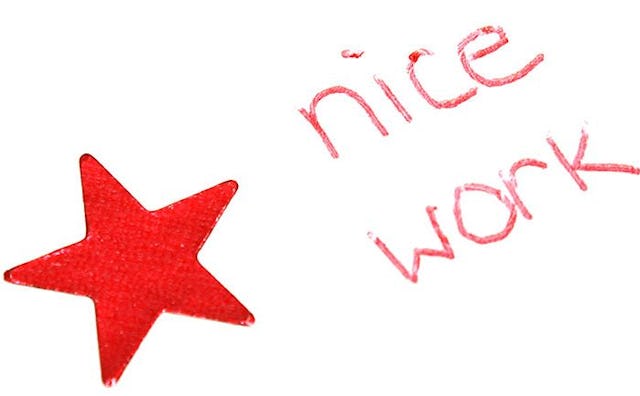Is Ditching Letter Grades a Good Idea?

One school in Carroll Gardens in Brooklyn, NY, has switched to using colors instead of grades. When a child masters a skill, they get green; if they’re on track but not quite fluent in that area yet, they get yellow; a red comes when they’re just getting started, or still struggling. If a kid stays in the red all year, they’re probably not moving up to the next grade, but a sea of greens and yellows means they’re on the right path.
It may be gentler—and prettier—but is it better?
There are challenges to this new system, including getting the parents to understand what the heck it means. Ideally it’s supposed to help identify where your kids are struggling in a clearer way, maybe without the pressure of failing grades or the shame of a D, but it raises a lot of questions. How do you indicate that a child is excelling, versus just meeting the requirements? How much of a spectrum is there on that yellow, and wouldn’t it be helpful to have a more detailed assessment? And most of all, what happens when these kids hit higher education levels and get back to letter grades and much more specific evaluations? How about when they get into the workforce and have to handle performance evaluations? And how is this more useful to parents than letter grades?
What does make sense is grading (or coloring, or numbering, depending on where you live) students on their skills versus subjects. It’s not just how they’re doing in math, it’s a breakdown of effort, conceptual understanding, computational skill, problem solving, and more. All that specificity starts to get a little blurry when the nuances of the letter grades, with their plusses and minuses, are traded in for broader, more nebulous guidelines.
When my kids were in kindergarten, their teacher had a great system to encourage good behavior in class. The kids each had a “picture person,” which was basically a popsicle stick with a little cut-out photo of their heads at the top, and they all started out in green, together. Misbehaving in class moved them into yellow, and persistently bad behavior moved them into red and resulted in a loss of some classroom privilege, maybe even a call home in extreme circumstances. Every day at dinner we’d talk about their picture people and who in the class had to move theirs. Some kids were always in yellow, and there was always one in each class who never, ever moved out of green. There were no kids living in the red, because they all saw it coming in plenty of time to do something about it.
I’m not sure if this same system works for academics. It’s being rolled out to schools across the country, mostly starting at the elementary level. Whether it will make its way up into middle and high schools is still anybody’s guess, and how it will affect all those kids who are used to just achieving green and calling it a day is just as unknown.
This article was originally published on